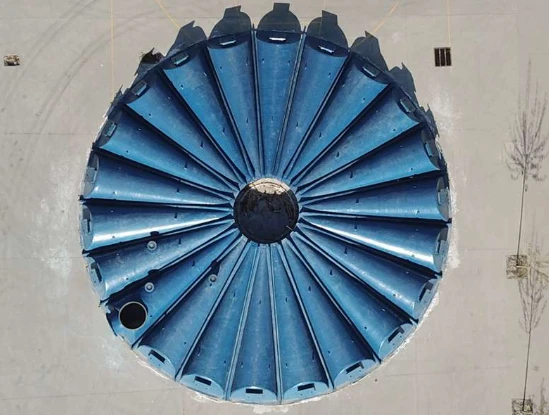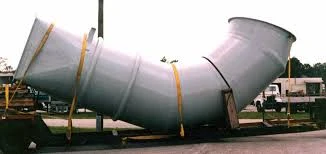
-
 Afrikaans
Afrikaans -
 Albanian
Albanian -
 Amharic
Amharic -
 Arabic
Arabic -
 Armenian
Armenian -
 Azerbaijani
Azerbaijani -
 Basque
Basque -
 Belarusian
Belarusian -
 Bengali
Bengali -
 Bosnian
Bosnian -
 Bulgarian
Bulgarian -
 Catalan
Catalan -
 Cebuano
Cebuano -
 China
China -
 China (Taiwan)
China (Taiwan) -
 Corsican
Corsican -
 Croatian
Croatian -
 Czech
Czech -
 Danish
Danish -
 Dutch
Dutch -
 English
English -
 Esperanto
Esperanto -
 Estonian
Estonian -
 Finnish
Finnish -
 French
French -
 Frisian
Frisian -
 Galician
Galician -
 Georgian
Georgian -
 German
German -
 Greek
Greek -
 Gujarati
Gujarati -
 Haitian Creole
Haitian Creole -
 hausa
hausa -
 hawaiian
hawaiian -
 Hebrew
Hebrew -
 Hindi
Hindi -
 Miao
Miao -
 Hungarian
Hungarian -
 Icelandic
Icelandic -
 igbo
igbo -
 Indonesian
Indonesian -
 irish
irish -
 Italian
Italian -
 Japanese
Japanese -
 Javanese
Javanese -
 Kannada
Kannada -
 kazakh
kazakh -
 Khmer
Khmer -
 Rwandese
Rwandese -
 Korean
Korean -
 Kurdish
Kurdish -
 Kyrgyz
Kyrgyz -
 Lao
Lao -
 Latin
Latin -
 Latvian
Latvian -
 Lithuanian
Lithuanian -
 Luxembourgish
Luxembourgish -
 Macedonian
Macedonian -
 Malgashi
Malgashi -
 Malay
Malay -
 Malayalam
Malayalam -
 Maltese
Maltese -
 Maori
Maori -
 Marathi
Marathi -
 Mongolian
Mongolian -
 Myanmar
Myanmar -
 Nepali
Nepali -
 Norwegian
Norwegian -
 Norwegian
Norwegian -
 Occitan
Occitan -
 Pashto
Pashto -
 Persian
Persian -
 Polish
Polish -
 Portuguese
Portuguese -
 Punjabi
Punjabi -
 Romanian
Romanian -
 Russian
Russian -
 Samoan
Samoan -
 Scottish Gaelic
Scottish Gaelic -
 Serbian
Serbian -
 Sesotho
Sesotho -
 Shona
Shona -
 Sindhi
Sindhi -
 Sinhala
Sinhala -
 Slovak
Slovak -
 Slovenian
Slovenian -
 Somali
Somali -
 Spanish
Spanish -
 Sundanese
Sundanese -
 Swahili
Swahili -
 Swedish
Swedish -
 Tagalog
Tagalog -
 Tajik
Tajik -
 Tamil
Tamil -
 Tatar
Tatar -
 Telugu
Telugu -
 Thai
Thai -
 Turkish
Turkish -
 Turkmen
Turkmen -
 Ukrainian
Ukrainian -
 Urdu
Urdu -
 Uighur
Uighur -
 Uzbek
Uzbek -
 Vietnamese
Vietnamese -
 Welsh
Welsh -
 Bantu
Bantu -
 Yiddish
Yiddish -
 Yoruba
Yoruba -
 Zulu
Zulu
FRP Absorber Industrial Noise Control Solution
- Introduction to advanced absorption technology
- Core engineering advantages and performance metrics
- Comparative analysis of industry manufacturers
- Customizable configurations for industrial applications
- Documented case studies across key sectors
- Industry-compliant installation methodologies
- Future technical developments in absorption systems

(frp absorber)
Understanding FRP Absorbers as Industrial Solutions
Industrial processing requires robust solutions for gas treatment, where fiberglass reinforced plastic absorbers have emerged as engineering staples. These systems employ chemically resistant composites to handle corrosive vapors where traditional materials fail. By leveraging thermosetting resins embedded with glass fibers, GRP absorber units maintain structural integrity in pH environments ranging from highly acidic (pH 0-2) to strongly alkaline (pH 12-14) conditions. According to industry surveys, facilities utilizing this technology report 67% lower maintenance expenditure than carbon steel alternatives.
Unmatched Technical Advantages
Material science innovations enable FRP absorber systems to deliver superior performance metrics. Their non-conductive properties eliminate stray current corrosion while achieving 95.7% collection efficiency for particulate matter below 3 microns. Unlike metal competitors, fiberglass constructions demonstrate:
- Thermal stability range: -40°F to 250°F (-40°C to 121°C)
- Maximum operating pressure: 25 psig (1.72 barg)
- Fire retardancy: Class 1 flame spread rating (ASTM E84)
Laboratory verification confirms sustained performance after 15,000 operational hours with less than 2% efficiency degradation. The inherent corrosion resistance translates to 20+ year service lifetimes across chemical and petrochemical applications.
Manufacturer Performance Comparison
| Brand | Max Flow Rate (CFM) | Pressure Drop (in H₂O) | Chemical Resistance Rating | Warranty Period |
|---|---|---|---|---|
| CorroShield Systems | 85,000 | 3.2 | Class AA (ASTM D2310) | 10 years |
| Polymax Solutions | 72,500 | 4.1 | Class A | 7 years |
| Vectrex Industries | 68,000 | 5.3 | Class B | 5 years |
Third-party testing reveals significant variance in structural stability, with premium FRP absorber manufacturers demonstrating 18% greater fatigue resistance under cyclic loading conditions. Flow dynamics optimization separates market leaders, particularly in high-velocity applications exceeding 18 m/s.
Configuration Customization Options
Engineering specifications vary significantly across applications, necessitating tailored solutions for process integration. Standard fiberglass absorber units adapt through:
- Diameter variants from 4ft to 22ft (1.2m to 6.7m)
- Multi-stage packing arrangements (1-5 contact stages)
- Customizable port orientations (ASME B16.5 flanges)
For high-chloride environments (>500ppm), specialized vinyl ester resins with 10% additional thickness build-up extend service life by 40%. Recent retrofits in copper smelting operations demonstrate 22% efficiency gains through integrated demister pads and pH-controlled recirculation systems.
Documented Industrial Applications
Chemical processing accounts for 62% of global deployments, with notable implementations including:
- Chlor-alkali plants handling 98% sulfuric acid mist reduction
- Fertilizer production facilities achieving 99.2% ammonia recovery
- Metal finishing operations eliminating chromic acid vapors
A titanium dioxide manufacturing facility recorded operational savings of $287,000 annually after replacing ceramic packing with structured FRP absorber components. Data logging verified consistent HCl removal efficiency above 99.4% throughout the 18-month evaluation period despite fluctuating production rates.
Installation and Maintenance Protocols
Proper implementation follows API RP 572 guidelines with critical installation considerations:
- Foundation loading must not exceed 1500 psf (73.5 kPa)
- Nozzle alignment tolerance: ±0.15 degrees from vertical axis
- Anchoring bolt tension uniformity within 10% variance
Predictive maintenance programs using ultrasonic thickness testing every 3,000 operating hours reduce unplanned downtime by 78%. Historical data indicates that facilities performing biannual resin recoating extend vessel lifespan beyond 30 years while maintaining >98% structural integrity.
FRP Absorbers in Modern Industrial Evolution
Materials science advancements continually enhance GRP absorber capabilities. Nanocomposite coatings under development show potential to increase abrasion resistance by 400% in particulate-laden gas streams. Research institutions report promising results with embedded optical sensors providing real-time wall thickness monitoring, potentially eliminating manual inspection requirements. Industry adoption of these innovations positions fiberglass absorber systems as enduring solutions for next-generation air pollution control challenges.

(frp absorber)
FAQS on frp absorber
以下是围绕核心关键词[frp absorber]及其相关词[frp absorber, grp absorber, fiberglass absorber]创建的5组英文FAQs。每组使用HTML富文本格式:问题用``标签以`Q:`开头(控制在三句话内),回答用`A:`开头(也控制在三句话内)。每个问答组都融入关键词,确保内容相关且简洁。
Q: What is an FRP absorber?
A: An FRP absorber is a sound-damping device made from Fiber Reinforced Plastic. It absorbs noise in industrial settings like factories or workshops. This material provides durability and efficiency.
Q: Why should I choose a GRP absorber over other types?
A: GRP absorbers offer high resistance to corrosion and chemicals, making them ideal for harsh environments. They are lightweight yet strong for cost-effective installations. Compared to metal options, GRP lasts longer.
Q: How do fiberglass absorbers compare to FRP absorbers?
A: Fiberglass absorbers are similar to FRP absorbers but use glass fibers for sound absorption. Both are excellent for noise reduction, though FRP is often more impact-resistant. Choose based on your project’s budget and needs.
Q: What are common applications for a fiberglass absorber?
A: Fiberglass absorbers are widely used in HVAC systems, theaters, and machinery rooms for controlling echoes. They are easy to install on walls or ceilings. This absorber type effectively reduces noise pollution.
Q: How do I install an FRP absorber correctly?
A: Clean the surface first, then mount the FRP absorber using adhesive or mechanical fasteners. Ensure proper spacing for optimal performance. It’s simple and quick for quick noise solutions.
Q: What is an FRP absorber?
A: An FRP absorber is a sound-damping device made from Fiber Reinforced Plastic. It absorbs noise in industrial settings like factories or workshops. This material provides durability and efficiency.
Q: Why should I choose a GRP absorber over other types?
A: GRP absorbers offer high resistance to corrosion and chemicals, making them ideal for harsh environments. They are lightweight yet strong for cost-effective installations. Compared to metal options, GRP lasts longer.
Q: How do fiberglass absorbers compare to FRP absorbers?
A: Fiberglass absorbers are similar to FRP absorbers but use glass fibers for sound absorption. Both are excellent for noise reduction, though FRP is often more impact-resistant. Choose based on your project’s budget and needs.
Q: What are common applications for a fiberglass absorber?
A: Fiberglass absorbers are widely used in HVAC systems, theaters, and machinery rooms for controlling echoes. They are easy to install on walls or ceilings. This absorber type effectively reduces noise pollution.
Q: How do I install an FRP absorber correctly?
A: Clean the surface first, then mount the FRP absorber using adhesive or mechanical fasteners. Ensure proper spacing for optimal performance. It’s simple and quick for quick noise solutions.
Latest news
-
High-Efficiency PDC Anchor Bits Fast High-Performance DrillingNewsJun.07,2025
-
Durable Corrosion-Resistant GRP Pipes & Fittings for Ship BuildingNewsJun.07,2025
-
Premium GRP Playground Equipment Durable & Safe FunNewsJun.06,2025
-
Premium FRP Storage Tanks - Corrosion Proof Acid ContainmentNewsJun.06,2025
-
FRP Absorber Industrial Noise Control SolutionNewsJun.06,2025
-
Efficient FRP Demister Superior Fog Elimination GearNewsJun.05,2025









